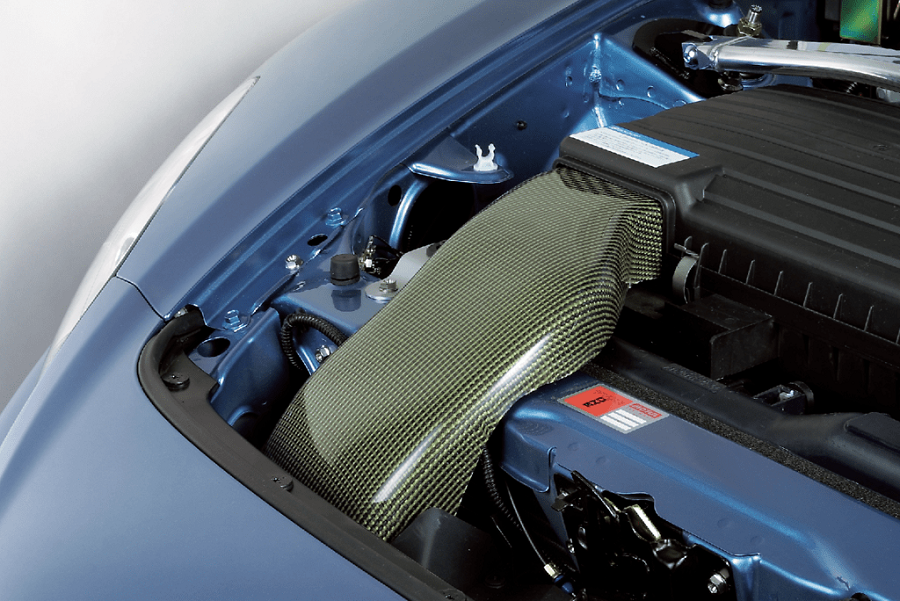Whether it’s for cooling or making power, air is vital for any car. This air ducting guide will show you how to maximize your car’s performance by improving airflow.
No matter what car you have, it needs good airflow to work correctly. Yes, even EVs need cooling for their engine and transmission components at very least, and the higher performance or harder use any vehicle has, the more important airflow is for all of its components. Parts like uprated air filters are a good place to start, but if you’re serious about extracting your car’s full potential, you’d do well not to ignore its ducting too.
Be it for performance or reliability, air is vital, especially on a modified vehicle. If you’ve beefed up your ride’s internals, the factory levels of airflow may not suffice. Luckily, we’re here to help. This feature will show you where air ducting may need to be improved, and most importantly, how you can do it.
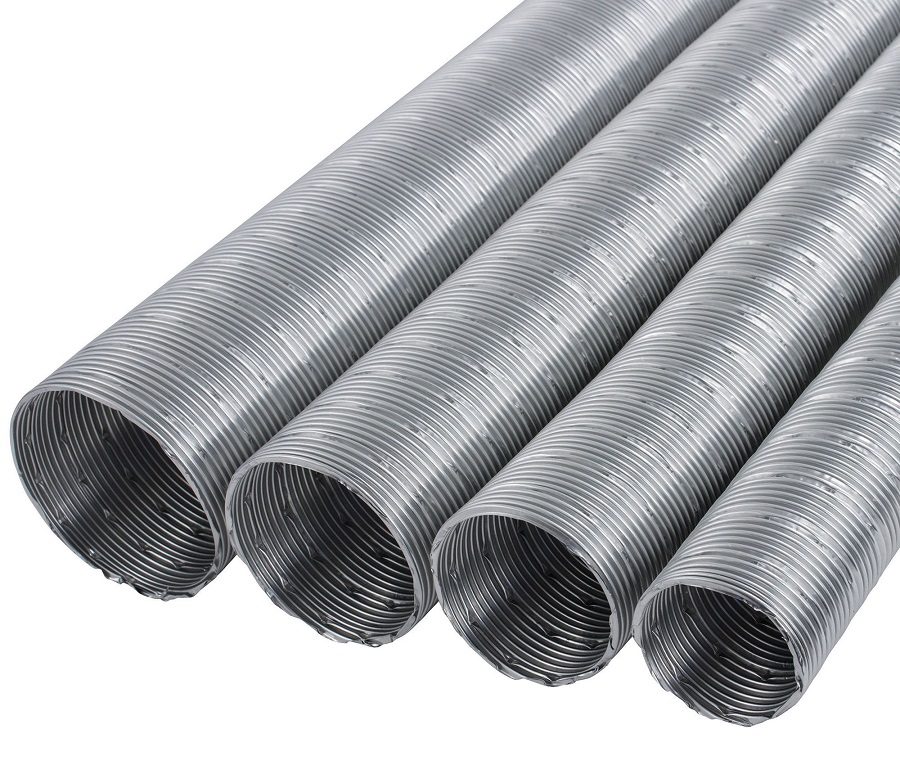
Engine air intake ducting
By far the most common form of automotive air ducting, so common in fact that almost every production car has it, is engine intake ducting. The job of this ducting, as the name suggests, is to guide air into the engine’s air intake. On production vehicles, these intakes sometimes have a dual use, using a thermostatically controlled flap to guide hot air from around the exhaust manifold when the car is cold to get the engine to full operating temperature. Then, once that’s achieved, it purely attempts to feed ambient air to the engine.
While almost all production vehicles have air intakes of some sort, and they are generally acceptable for factory performance levels, they are rarely optimal. That means you can almost always improve upon the design for even mildly tuned cars, and such upgrades are vital on heavily tuned engines.
While having enough air is more important than having cold air when it comes to increasing performance, in an ideal world you want enough air that’s also as cold as possible. Cone air intakes are often used on tuned engines instead of the factory enclosed airbox despite the likelihood of them ingesting hotter air, simply due to the fact that they can channel *more* air in. However, you can do better than that, which is where improved ducting comes in.
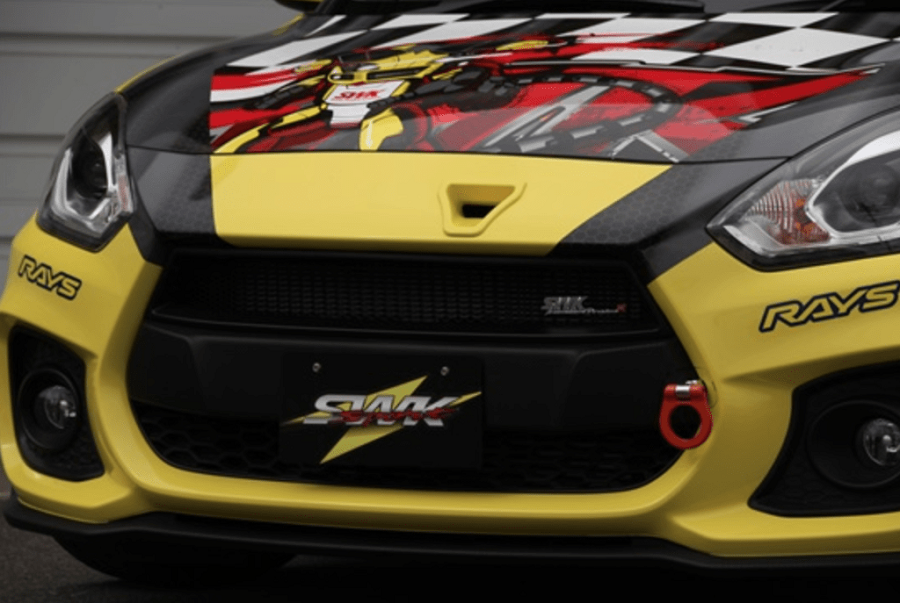
A small aftermarket air duct on the front bumper of a Suzuki Swift Sport.
How to upgrade engine air intake ducting
You can actually upgrade some cars using production parts, where more powerful versions of the same car come with larger diameter ducting that you can retrofit to lower performance models. But for the vast majority of vehicles, you will be fitting aftermarket ducting.
Off-the-shelf kits exist for certain cars, often along with a high performance airbox too, but generally this job will come down to using universal parts and your own ingenuity. You can buy ducting for this specific reason from various performance parts suppliers, but ducting, even on race cars, is often made from universal rubber or household/industrial flexible aluminum.
As the goal is to feed cold air to your intake, the ideal place for the ducting to feed from is the exterior of the car via an opening in the bodywork, ideally facing the direction of travel for somewhat of a ram-air effect, but sometimes that is simply not possible. In scenarios where that’s not going to happen, you can still try to use ducting to bring the air from as cold a place as possible, behind bumpers for example, or from the relatively high pressure area at the base of most cars’ windscreens.
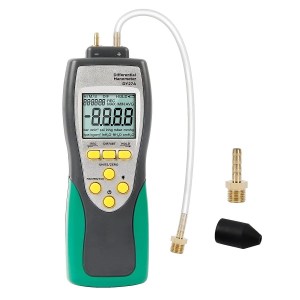
Pitfalls to avoid
One thing to be very aware of is to not use fully sealed ducting unless you are completely sure it is of a large enough diameter to not be restrictive. This is because of the previously mentioned point of ‘enough air is better than cold air’. Even on hardcore turbocharged drag cars the ducting often ends an inch or two before the turbo, eliminating the chance of it being a restriction. It’s actually rather rare for a car’s chassis and engine setup to give room for an adequate ducting size that would be zero restriction at high power levels, hence the relative rarity of fully sealed airbox setups aside from on big budget manufacturer backed race and rally cars. Ultimately, it can involve a massive amount of cost and fabrication to make possible.
If you want to test to see if your intake ducting is at all restrictive, it’s actually quite simple to do. You just have to use a little device called a manometer. Digital manometers like the one pictured above can cost as little as 50 bucks and can detect even slight pressure differential changes. They are very easy to use, and by detecting even a slight vacuum in the intake piping under full engine load, you’ll be able to figure out if there’s a restriction and therefore power loss. Even 1psi of vacuum is a relatively huge restriction, and this is why you can’t simply test this using a conventional automotive vacuum gauge.
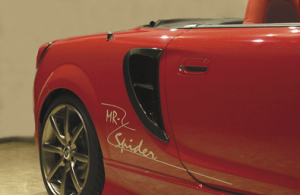
Ducting upgrades are particularly useful on mid or rear-engined cars.
Is engine ducting necessary?
The final thing to consider is if intake ducting is truly important to your setup or not. On front engine vehicles, due to the massive amount of air naturally making its way in to the engine bay via the front bumper and grille, good ducting is an advantage but rarely vital, but conversely, on most mid/rear engine vehicles, as the engine bay isn’t in direct airflow, good ducting is vital. Even though most mid-engine vehicles do have some form of ducting to their engine bay, the production setups are rarely optimal, and they are generally verging on useless when you increase the engine’s power significantly over standard.
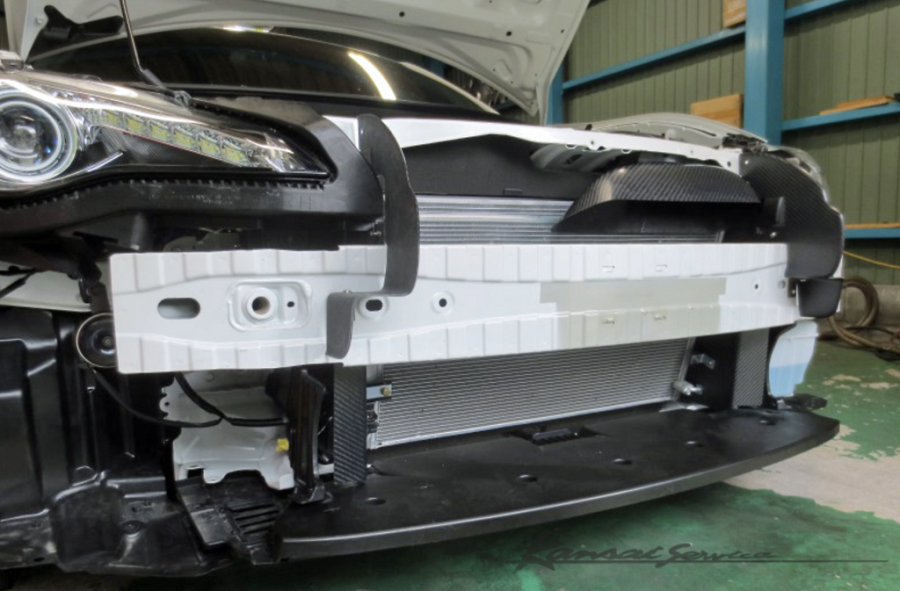
This Kansai GT86 is running a carbon air duct feeding down onto a large white cooling panel.
Radiator, intercooler, and oil cooler ducting
While this type of ducting can potentially also use the pipe-style that air intakes generally use, the ducting for coolers tend to be in the form of large flat sheets that both guide air to them, and prevent the air from going around them rather than going through the cooling matrix as intended.
Much like with the air intake ducting, most production cars have some form of ducting around their coolers as standard, but these are rarely ideal and commonly upgraded on highly tuned vehicles. To improve the ducting, a common thing to do is to fully seal off any areas the air can bypass the coolers, effectively forcing any air to travel through them rather than past them. Sealing off these gaps between coolers and bodywork is most commonly done with plastic or aluminum sheet, sometimes supplemented by adhesive aluminum tape. While some aftermarket cooler kits come with ducting included, on the whole you’ll probably have to custom-make it for your vehicle from universal parts.
Performance Potential
While very simple to do and certainly worthwhile to get maximum efficiency from your chosen cooler setup, don’t expect noticeable gains unless your coolers aren’t in direct air flow. This is because for coolers, bigger is better, and you generally find, providing they are mounted in relatively direct airflow, a significantly larger cooler tends to be far more effective than even the best ducting setup.
If your coolers aren’t in an area of direct airflow your ducting will have to be more complex and have a higher importance, and will need to be both large diameter and feeding from direct frontal airflow to be effective. This generally means large scoops and ducts on the bodywork, which can be complex and expensive to make.
Cooler ducting isn’t limited to feeding them air either, as allowing the air to escape is important also. If air that’s already travelled through the cooler gets trapped behind it, new cold air will not be able to reach the cooler, drastically reducing its efficiency. You can solve this problem in many ways, from simply having vents in the bonnet or engine cover to allow air to escape, right up to having full sealed outlet ducting leading to a large outlet somewhere on the car’s bodywork. This is often done both for maximum cooling efficiency and to make sure the air exits in the ideal place for maximum aerodynamic or downforce benefits.
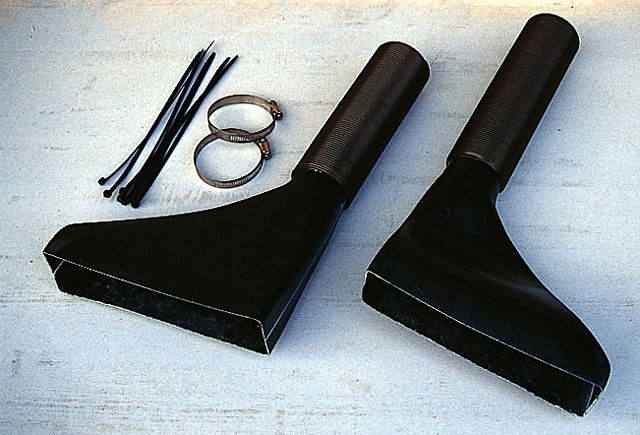
RE Amemiya brake duct kit.
Brake ducting
While not needed for fast road use, cars that see circuit use, such as track day cars and especially full race cars, really will benefit from brake ducting. While brakes are designed to work at high temperatures (in fact, they tend to work better once warm), if you truly overheat your brakes they will quickly become ineffective, verging on dangerous, and can actually completely fail.
To help prevent overheating brake discs, pads, and calipers, large flexible ducting – much like air intake ducting – is generally used to feed air to these parts from an area with direct air flow; generally the front end of the car.
Aside from simple universal ducting, certain popular track cars have direct fit aftermarket ducting setups available, sometimes even with special brake disk backing plates that the ducting attaches to, making the outlet of the ducting as close to the area that needs cooling as possible.
On certain race cars they have designed ducting outlets that almost resemble a brake caliper. These surround part of the brake disc itself and direct air on to the brake disk and often down the disc’s central vanes, at very close range. This maximizes the effectiveness of the ducting.
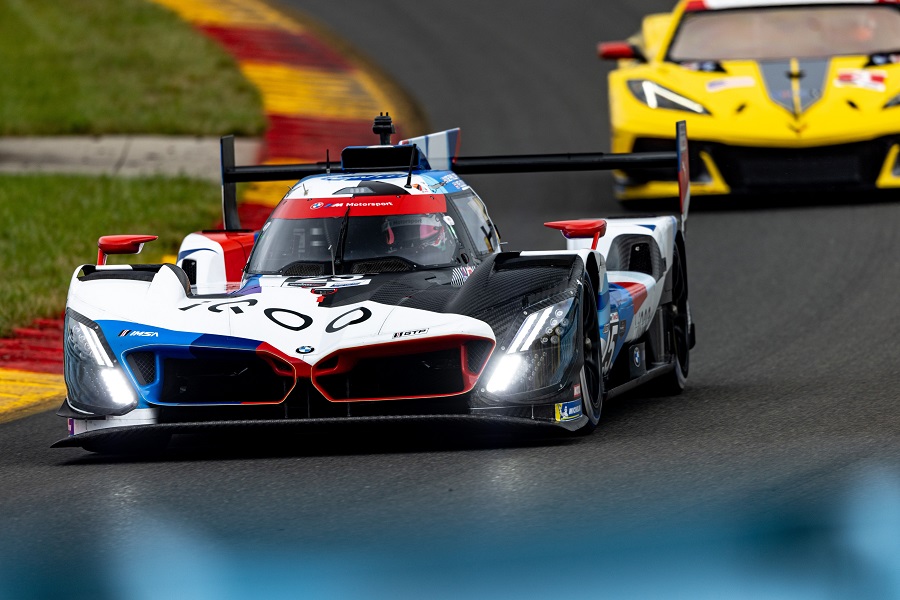
Top level endurance prototypes use complex channels and ducts to govern airflow. How many can you spot on this BMW GTP?
Other ducting
While the engine, various coolers, and your brakes, are by far the most common components to feature air ducting, depending on the application almost every aspect of a vehicle could be ducted if needed.
The cockpit, driver’s seat, or even the driver’s race suit can feature direct cold air feeds on race cars, especially for endurance racing and vehicles that get particularly hot.
Many cars have specific ducting to help cool certain engine components, especially if they are situated in an area where they are subject to intense heat. Alternators and starter motors are the most common to have these, but power steering components, brake master cylinders, and even turbo exhaust housings have direct air ducting fitted to them on some production cars.
Ducting doesn’t even have to be for feeding an item cold air either, as ducting is regularly used for aerodynamic reasons on cars intended for high speed use, such as supercars, Time Attack cars, and GT race cars. Ducting is used to direct air in specific ways around the car to either improve downforce or reduce aerodynamic drag, and can be anything from simple openings in bodywork to a complex series of large diameter tunnels that can travel the entire length of the cars bodywork in some applications.

